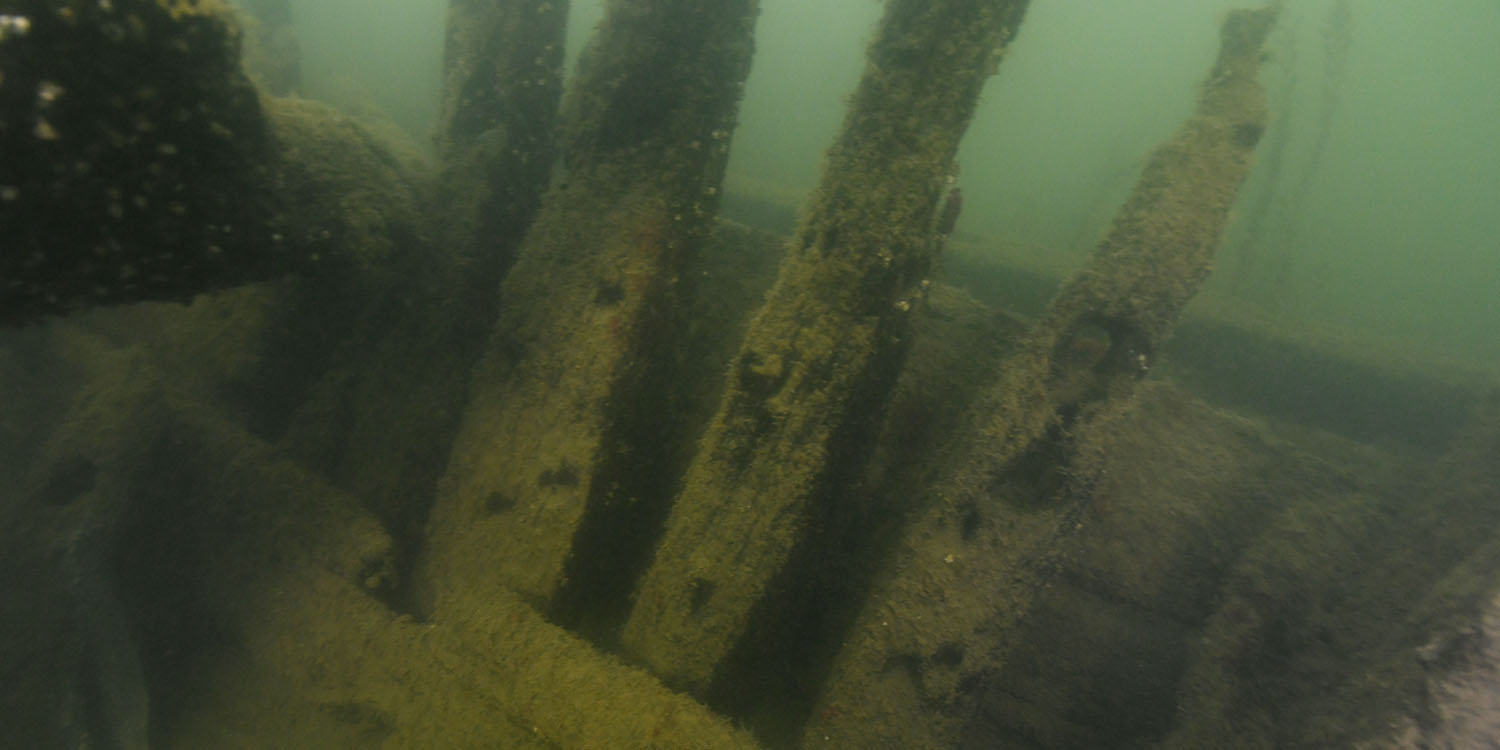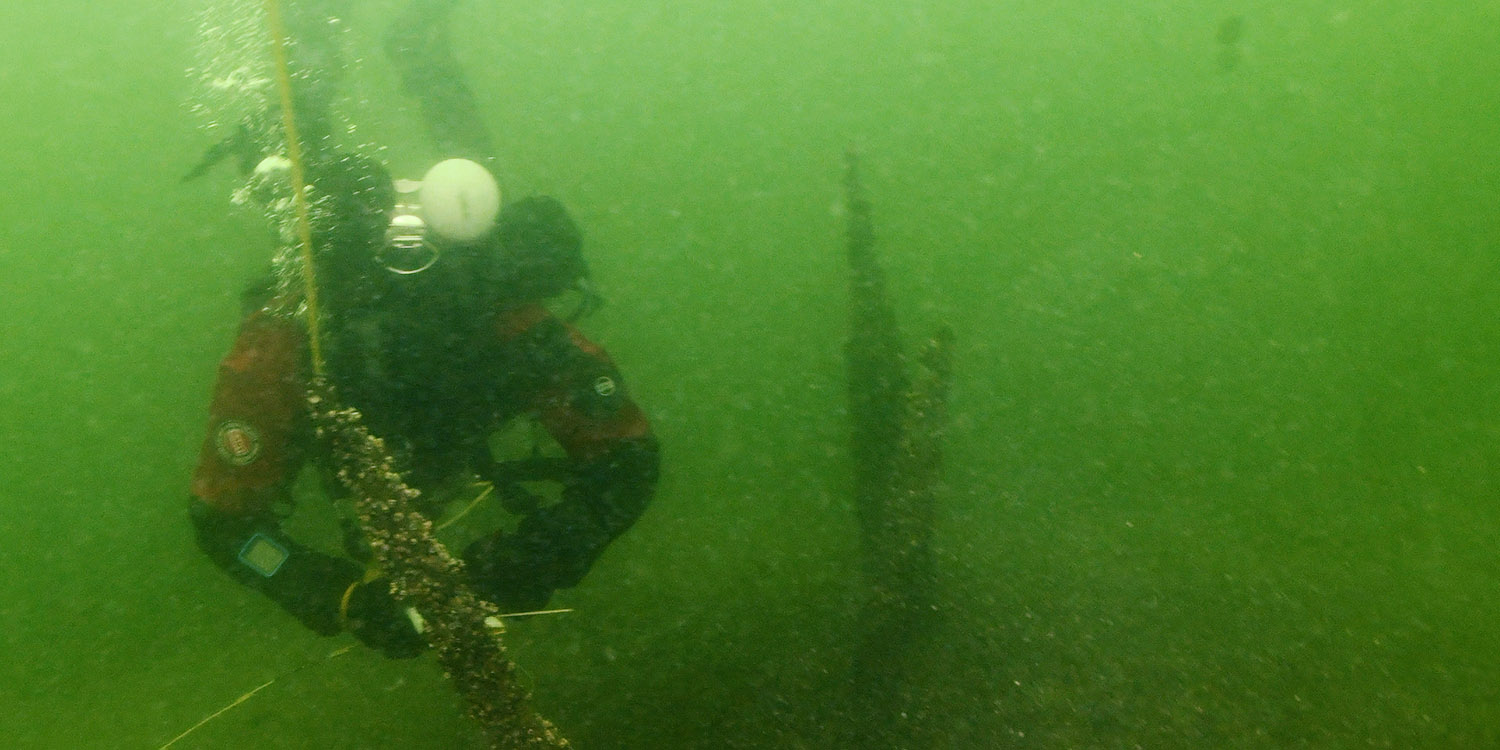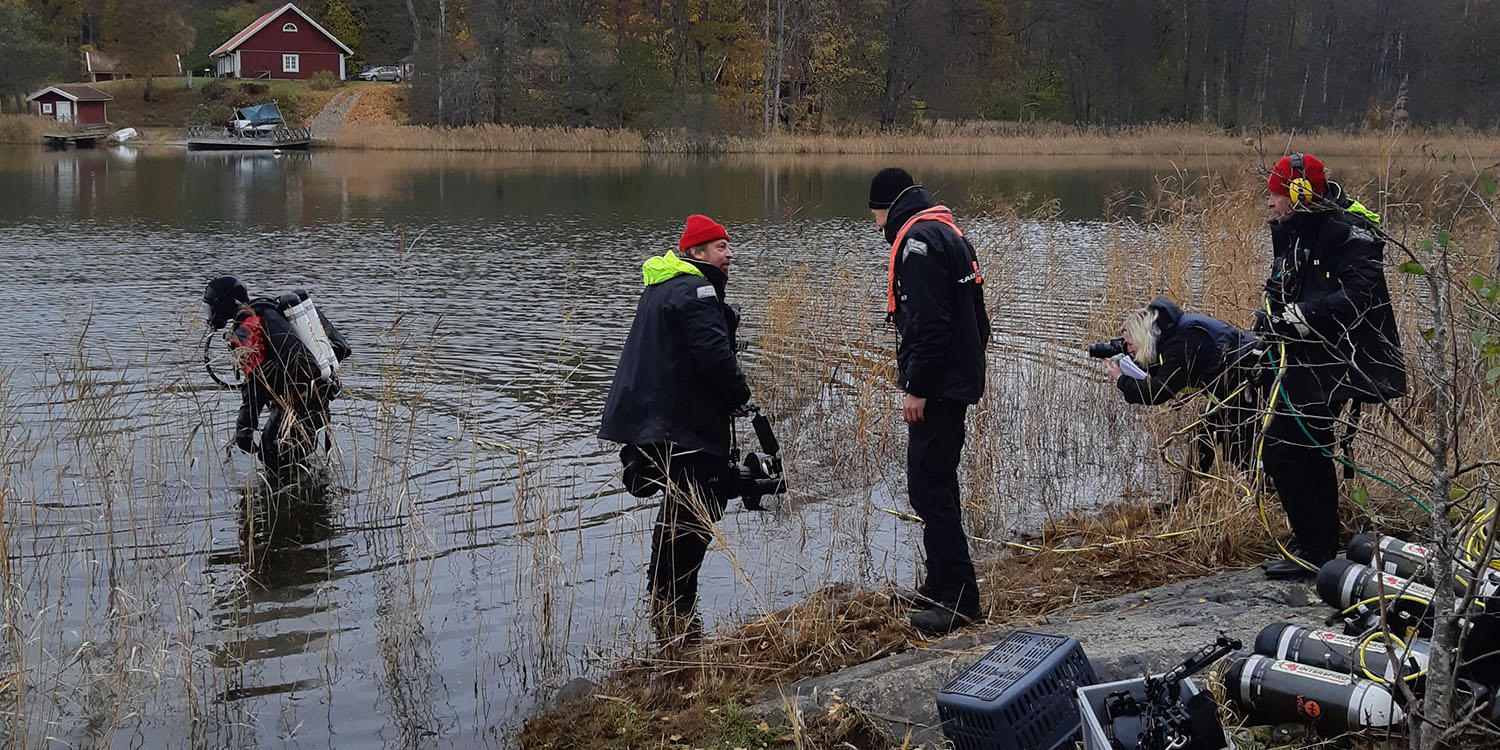
These shipwrecks have been mentioned in literature and kept alive in popular memory since at least the early 19th century. They have been linked to a battle mentioned in Icelandic sagas between Olaf the Holy’s foster father (Olaf himself was young and was on board, but he did not lead the fleet) and a chieftain named Sote. Most scholars have wanted to place the battle in the Baltic Sea and Häringe, although there are many others who argue that the location of the battle was on the west coast and not in the Sotholm district at Södertörn. Anders Franzén had had a keen eye for the Häringe wrecks since 1953, and in 1959 he posed for newspaper photographers in a tight wetsuit and swim flippers in the reeds at Häringe. He explained that the dimensions of the wrecks made a perfect match with the preserved Viking ships in Oslo. The Norwegian press was thrilled that Vasa’s discoverers had now found Olaf the Holy’s dragon ships, and speculation abounded about the possibility of salvaging them and returning them to Norway.
Perhaps Franzén can be forgiven and the blame laid on the poor visibility underwater that made him miss the fact that the ships he thought were Viking ships were actually carvel-built and not clinker-built, as well as all the other tell-tale signs that these were not Viking Age ships, dragon ships or Olaf the Holy’s cargo boats.
Even before the results from the dendrochronology samples arrived in our inbox, we maritime archaeologists assessed that these were probably ships from the 17th and 18th centuries (Wreck 2), and that the largest of the wrecks (Wreck 5) could possibly be as old as from the late Middle Ages.
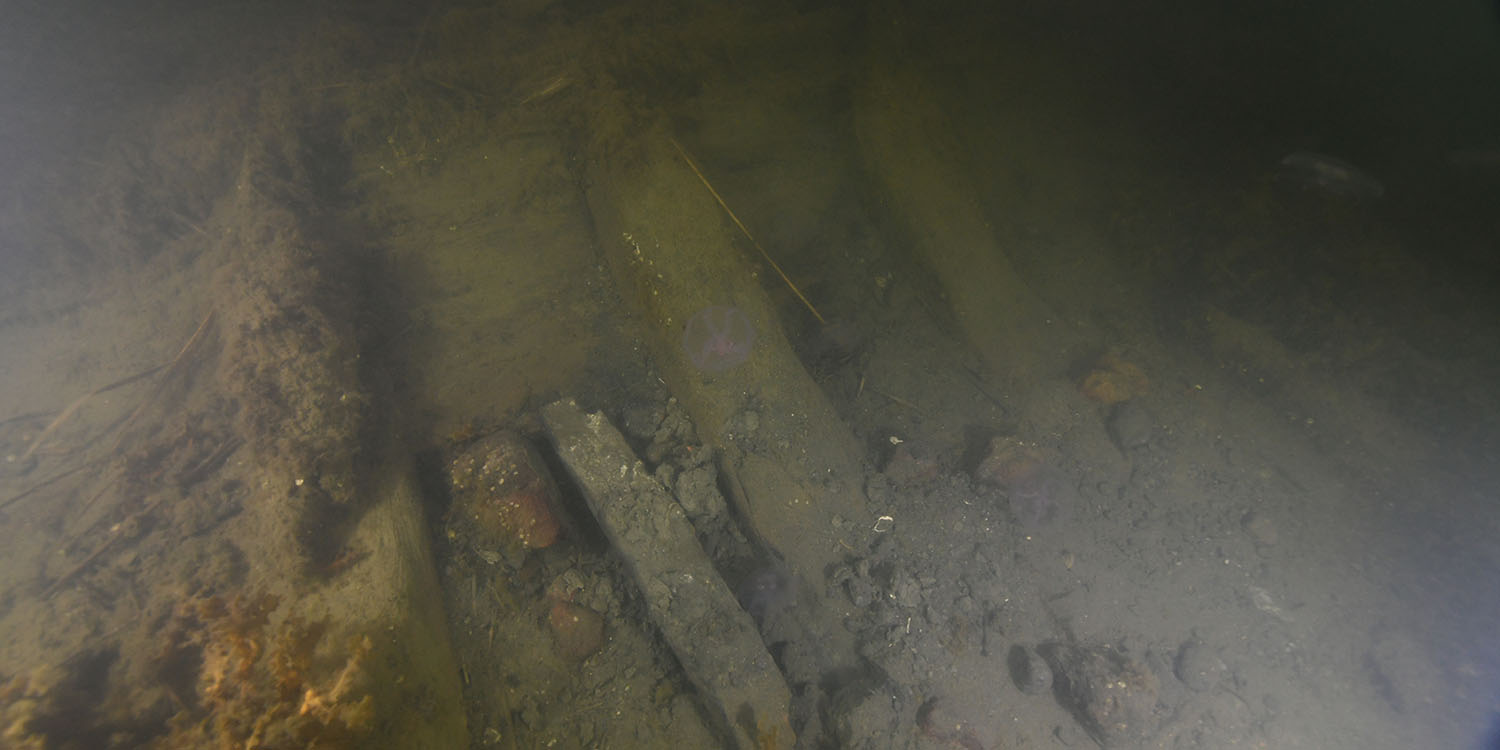
Wreck 1, photo: Marco Alí/Vrak/SMTM.
We’ll have to see later on if this is true, because the samples from Wreck 5 did not yield any dates at all. This is a shame, since the wreck is is an intersting one that was built in oak with a preserved length of 33 metres. Its sturdy rudder is still in place, ready to turn starboard. A piece of the mainmast remains amidships. It consists of several smaller parts, and was once a very strong mast. It appears to have been sawn off. Long vertical crossbeam knees adorn the crossbeam ends, reminiscent of the Mary Rose in England. Could this be one of the 16th century warships?
The second of the prominent wrecks at the site is Wreck 2, which lies further into Landfjärden at Betsholmen. This shipwreck has a shape that looks more like a warship than a cargo ship. It was dated to 1630–1650 and the timber was felled in Mecklenburg, Pomerania or Zealand. In the bow of this shipwreck, we found a hearth box for cooking. The box is lined with brick on the inside. The ship is preserved to a bit above the strake and has a preserved length of about 23 metres.
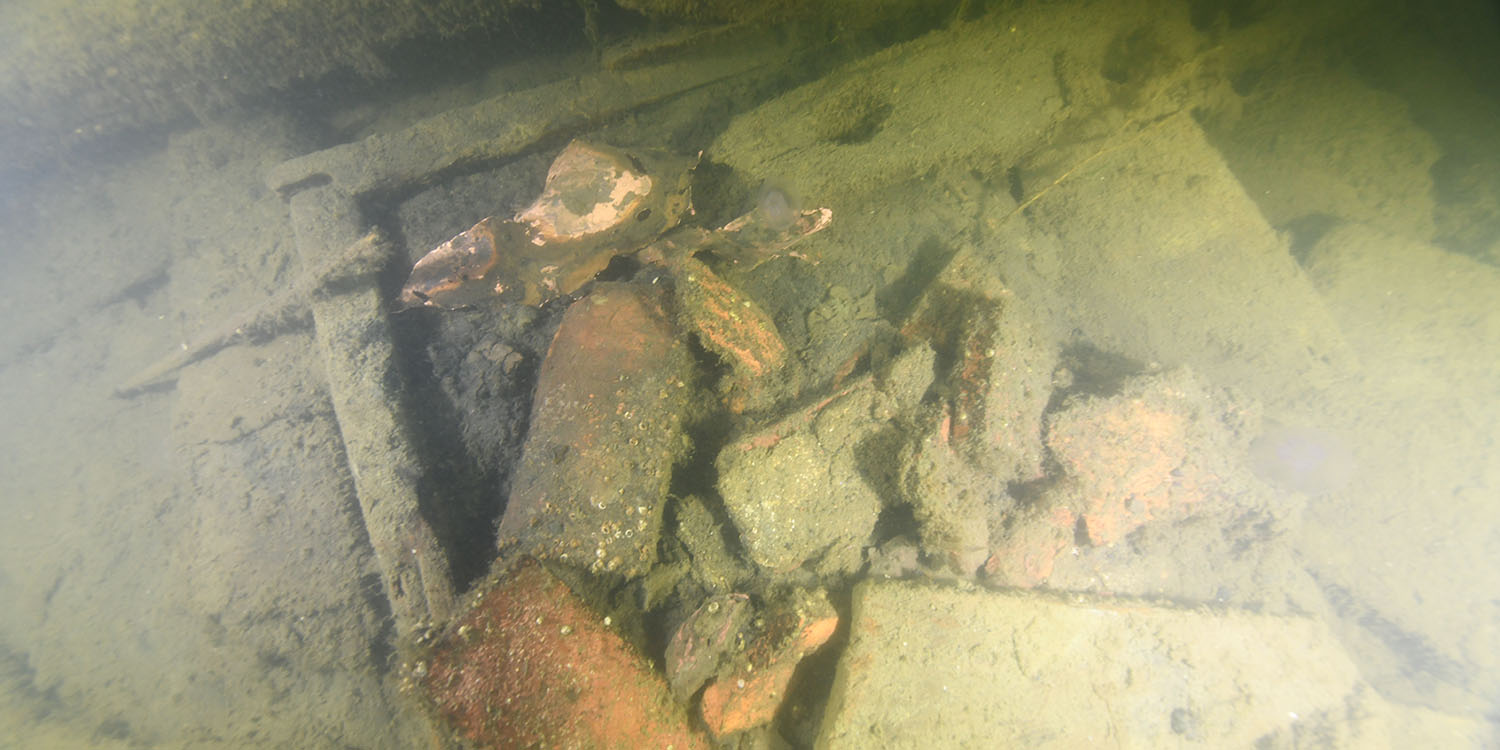
Wreck 2, photo: Marco Alí/Vrak/SMTM.
Inside this wreck, at a depth of just a few metres, the remains of a clinker-built ship of pine were found the year before. The only remains of it we can see are some frames and parts of the planking, with the rest hidden under the bottom sediment. We named this wreck Wreck 1, and it can be dated through tree-ring analysis to the year 1700. The timber was probably felled in southern Norway, in Uppland or on Åland.
The third of the famous Häringe wrecks is Wreck 7, which is situated parallel to the castle’s current sauna jetty and can thus be viewed from it by anyone on a Sunday stroll. What is visible, however, is not something that anyone other than archaeologists get excited about – a couple of eroded rafter tops right at the water’s edge. The wreck disappears under dry land, and at some point in history was excavated at the level of the sauna. It was once quite a large ship, as we discovered through sounding. The ship’s timbers were felled in Finland or east-central Sweden sometime between 1702 and 1705.
During our survey, we also took the opportunity to map Landfjärden with side scan sonar and were able to determine the position of previously known wrecks and harbour facilities. The survey also revealed a small wreck further out in the bay. We had received information about this shipwreck in advance from Ronny, who lives in the area and who has been very helpful in our work. There was no time to examine the wreck in 2023, but it is likely to be a modern boat. In any case, plans are underway to return to this wreck in the future.
The project on Häringe’s maritime landscape is part of the museum’s scientific research programme and will continue this year. The area around Häringe with its castle is fascinating. At different periods of time, a shipyard, brick and lime works, pile barriers and harbour facilities have existed. All of this has left its mark underwater. The many interesting ship remains are an exciting part of all this, even though we now know that they were not the Viking ships of the chieftain Sote or Olaf the Holy.
